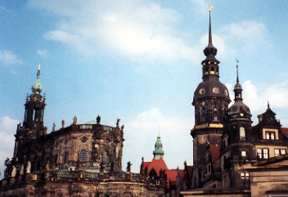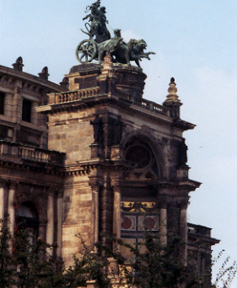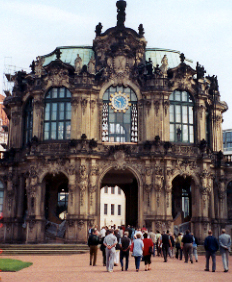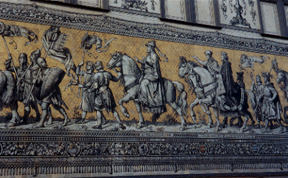

By
Don and Linda Freedman
Search
TheTravelzine
TheTravelzine Group
Access Your Mail
Don's
Gallery
Packing
Hints
Planning
Tips
Cities
Links
Links
LINKS TO OUR TRAVELOGUES
Argentina, Buenos Aires - Jan-Mar 2010
Argentina, Buenos Aires - Jan-Mar 2009
Argentina, Buenos Aires - Jan-Mar 2008
Austria - Fall 2005
Belgium, Brussels - Fall 2000
Canada - Summer 2002
Canada - Summer 2001
Canada - Summer 2000
Czech Republic - Spring 2000
France - Fall 2002
France, Paris - Fall 2000
France, Paris - Spring 1999
France, Lyon - Spring 1999
Germany, Berlin - Fall 2009
Germany - Fall 2002
Germany - Spring 2000
Germany - Fall 1999
Greece - Fall 2012
Greece - Fall 1999
Greece - Fall 1997
Hungary - Spring 2000
Israel - Fall 1999
Italy - Winter 2007
Italy - Winter 2006
Italy - Winter 2005
Italy - Winter 2004
Italy - Winter 2003
Italy - Winter 2001
Italy - Fall 1998
Italy - Fall 1996
Netherlands - Spring 2000
Portugal, Azores - 2019
Portugal, Azores - 2018
Portugal, Sao Miguel & Lisbon - 2017
Portugal, Azores - 2017
Portugal, Azores - 2016
Portugal, Azores - 2015
Portugal, Azores - 2014
Portugal, Azores - 2013
Portugal, Azores - 2012
Portugal, Azores - 2011
Portugal, Lisbon - 2011
Portugal - Fall 2006
Portugal - Fall 2004
Portugal - Fall 2003
Portugal - Fall 2001
Portugal - Spring 1999
Portugal - Spring 1997
Slovakia - Spring 2000
Slovenia - Spring 1999
Slovenia - Fall 1996
Spain, Barcelona - Winter 2006
Switzerland - Fall 2002
Switzerland - Spring 2000
Switzerland - Spring 1999
Switzerland - Fall 1998
Switzerland - Fall 1997
Switzerland - Spring 1996
U.S. Florida, Key West - Fall 2006
U.S. Florida - Spring 2001
U.S. Maine - Summer 2002
U.S. Massachusetts - Summer 2003
U.S. Massachusetts - Summer 2002
U.S. Massachusetts - Summer 2001
U.S. New York State - Fall 2005
U.S. New York State - Summer 2004
U.S. New York State - Summer 2003
U.S. New York State - Summer 2001
U.S. Washington,DC - Spring 2000
Forty Days
Celebrating Forty Years!
Fall 2002
Bremen | Hamburg | Berlin
Potsdam | Dresden,
Bautzen and Gorlitz
Nürnberg | Karlsruhe | Zürich | Strasbourg | Bern
Annecy | Avignon | Marseille | Aix-en-Provence | Paris
Dresden
We left Berlin Zoologischer station at 09:20, arriving at the Dresden-Neustadt train station at 11:41. There is another station in Alstadt, which was still under repair from the floods. We would have gone to Neustadt anyway because our hotel was in the new town.
Our friend Johannes and his wife, Sonja, came to spend the week-end with us in Dresden. We quote here, with his permission, part of the message he posted to TheTravelzine group, about the time we spent together in Dresden and of their interesting trip on the way to meet us:
"In the middle of September, I traveled together with my wife Sonja to Saxonia, the Erz Mountains and Dresden, where we had a beautiful get-together with Linda and Don.
"We arrived at Olbernhau not far from the Czech border on Friday afternoon after crossing the Erz Mountains and some detours due to the bad flood that had occurred to eastern Germany in August. All the villages and cities were already remarkably clean, three weeks after the flood only. But we still saw destroyed houses and streets in this lovely landscape. We would never have believed that these sweet valleys could ever be flooded by the little creeks running through them.
"The Erz Mountains have their name from the arch ("Erz") that was carved out of the mountains for centuries. At Olbernhau we stayed at Hotel Saigerhuette, a very nice hotel, located in the middle of a museum complex. The name "Saigerhuette" derives from an early industrial plant, built 460 years ago to melt the silver out of the silver arch. The hotel consists of two of the old framework buildings, which have been restored very carefully. Our room was clean and nice and the service was friendly, the dinner was great (we had typical Erz Mountain marinated beef) and our overnight-stay was not disturbed by the drying machines that were running during daytime to dry the cellars, where the flood had destroyed parts of the beer dispensing equipment.
"A German proverb says: "beautiful girls are from Saxonia" and we found that the girls we met were very friendly as well. This experience continued when we came to Freiberg and Dresden the other day.
"Olbernhau is not quite that famous as Seiffen which we visited in the evening. Seiffen, the cradle of the famous Erz Mountain artistry of building cute little toys and puppets from wood, There were so many nice little shops. If you want, you might look at some of the typical Erz Mountain products. The Erz Mountains are famous for their celebration of Advent and Christmas in December as well and much of the produced craftwork is dedicated to Christmas themes.
"We left the Saigerhuette
early on Saturday morning for Dresden, but stopped on our
way at Freiberg. Freiberg has been a very rich town in the past,
thanks to the silver mining and melting in the Erz
Mountains. Together with the remarkable ensemble of city
buildings the Dome reflects the great history of this
amazing little town. In the Dome of Freiberg you find the
eldest preserved Silbermann organ! Silbermann's organs
are the greatest for the interpretation of the organ
works of J. S. Bach. We admired the sound of this amazing
organ during the guided tour of the Dome, not knowing
that we would see the last and biggest Silbermann organ a
few hours later in Dresden's Hofkirche. The guide ended
at the so called Golden portal, a famous piece of art from Romanesque
times.
[Back
to Top]
"When we arrived at our hotel Marthahospiz in Dresden, Linda and Don were waiting for us in front of the hotel. Soon after we had said hello to each other and taken our room in this very nice and clean hotel with a gorgeous breakfast salon in Biedermeier style, we walked from our hotel in Dresden Neustadt to the old city center on the other side of the Elbe river, all the time having a gorgeous view upon the beautiful buildings which are facing the river. Hardly anything of the flood's destruction could be seen, they had done a great cleaning job.
"At this web site you will get views if you click on the red spots highlighting the most interesting places in Dresden's old city center. Dresden offers so much to see, and everything is close together, just a few minutes' walk away, it is terrific. Buildings are dating from Renaissance and Baroque times until today's modern award winning Synagogue building. We learned a great deal about this beautiful city and it's most important king, August the Strong. He loved and collected everything beautiful: women, architecture, jewelry, paintings; people rumored that he had 365 children... On our way through the city we could hear the drying machines rattling in the basements of the old buildings, still fighting water and humidity.
"Saturday night Linda and Don had been invited to a birthday party and therefore Sonja and I went to the Wenzel, Prager Bierstuben restaurant in Dresden Neustadt, right around the corner and a few steps only from our hotel. We had some Bohemian specialties: sour sausages and beef and knoedel. Food was good. The Wenzel was very crowded and we found two seats at a table where Sonja met by chance a school mate from her nursing school. They had not seen each other for over 30 years! What a surprise and so much to talk about!
"On Sunday, after a bus ride through Dresden and a visit at Pfund's Dairy we had a look at August the Strong's private art collection at the Albertinum where we admired his spectacular jewelry. At the Albertinum there is also a nice collection of paintings by Caspar David Friedrich, Germany's most important painter of the romantic era in the first half of the 19th century. The gallery of old masters was still closed because of the flood. BTW, at the hotel we had booked a special arrangement which turned out to save us a lot of money because it permitted free use of public transportation and free or cheaper entrance to museums.
"We did all the
sightseeing in Dresden together with Linda and Don and
had an absolutely wonderful and great time together. On
Monday morning Sonja and I left very early to get back to
work, while Linda and Don were continuing their fabulous
trip, gathering new Zine members along their way."
[Back
to Top]
The Hotel Martha Hospiz, which had been recommended to us by Pierrette, is a five-minute walk from the train station and a ten-minute walk from Altstadt. The facade of the hotel blends with the architecture of the residential street so you have to keep your eyes open to spot the small sign next to the entrance. We walked down a short bright corridor to the reception desk in the lovely atrium bordering the garden at the rear. The atrium and the glass elevator had been added to the building in the renovation. The ample breakfast buffet is served in the attractive breakfast room and at tables at the rear of the atrium. Our good-size double room and bathroom were squeaky clean and all the furnishings were fine quality and tastefully done. The Martha Hospiz is an excellent value three-star accommodation which we heartily recommend.
We arrived only weeks after the floods and it was amazing to find so much was back to normal. The most serious damage had closed several major buildings and museums but the repair work was well underway.
When we approached the old city from the right bank, crossing at the Augustus Brucke, we were as awestruck as the Italian artist Canaletto was when he painted the scenes of this town that are so famous.
This small, gorgeous city on the River Elbe was destroyed by fire bombings in 1945. It has been slowly rebuilt and hopefully will be completed in 2006 for the city's 800th anniversary.
 The Theatre Platz,
one of Germany's most beautiful squares, is framed by the
Zwinger, the Semper Opera House and the baroque Catholic
Cathedral, three highlights of any visit to Dresden.
The Theatre Platz,
one of Germany's most beautiful squares, is framed by the
Zwinger, the Semper Opera House and the baroque Catholic
Cathedral, three highlights of any visit to Dresden.
The Zwinger is a marvel of festive
baroque architecture. This huge complex was built between
the inner and outer walls of the city fortifications.
Originally designed for tournaments and as a court
pleasure garden, it also served as a venue for
festivities and housed valuable collections. Since its
reconstruction, it has housed the Old Masters Picture
Gallery, the Armoury Museum, the Porcelain Collection and
lots more. 
[Back
to Top]
The Frauenkirche, the epitome of protestant church architecture lay in ruins until a few years ago. Thanks to the support of people around the world, it is rising from the ashes. The old sandstone and brick are being pieced together with new replicas to recreate the original masterpiece. Rising high in the middle of the city, it will be a sight to behold.
Facing the river is the Georgentor
Gate, between the Palace Park and the Royal Mews. The
broad stone staircase to the left, facing the gate,
flanked by statues representing the four times of day,
leads to the Bruhlsche Terrace, praised as the Balcony of
Europe because of its views of the Elbe Valley. 
The new synagogue, on the site of the old synagogue, was completed in 2001. The unique design of twisted and solid sandstone walls depicts how the Jewish people were scattered and memorializes the wailing wall in Jerusalem. The Star of David in the window above the entrance was saved by the firefighters when the old synagogue was destroyed on Kristallnacht.
On the north wall of the Royal Mews
is the world's largest porcelain frieze. The Procession
of Princes represents the ruling members of the Wettin
Dynasty over a period of 800 years. It is 102 meters long
and composed of 25,000 Meissen porcelain tiles.
[Back
to Top]
 Speaking of world
records, the list of Dresden's accomplishments is mind-boggling.
Here's just a sampling: world's oldest hillside
suspension railway, first German Pilsner beer, world's
first bra, most modern microchip factory in the world,
first European porcelain, world's largest porcelain
collection, world's first coffee filter, world's first
reflex camera, toothpaste tube and mouthwash, world's
oldest fleet of paddle steamers - amazing, eh?
Speaking of world
records, the list of Dresden's accomplishments is mind-boggling.
Here's just a sampling: world's oldest hillside
suspension railway, first German Pilsner beer, world's
first bra, most modern microchip factory in the world,
first European porcelain, world's largest porcelain
collection, world's first coffee filter, world's first
reflex camera, toothpaste tube and mouthwash, world's
oldest fleet of paddle steamers - amazing, eh?
The Albertinium houses the sculpture collection, the New Masters Gallery, the Green Vault and the coin collection. We were able to see Augustus the Strong's personal collection of exquisite and unusually designed pieces. We were treated to the exquisite colors of Carl Lohs, the astounding landscapes of Casper David Friedrich, Carl Gustav Carus and John Christian Dahl. The realism and detail of the masters makes me tingle as I write this.
In the evening there was a benefit concert in Zwinger Platz to aid flood victims. Twenty-two thousand of us gathered to enjoy the live rock performances on this beautiful evening in this inspiring venue, a perfect night for bratwurst and beer.
Our long time dear friends,
Pierrette and Louis, had invited us and other old friends
to celebrate their birthdays at the very special Am Glacis. This sleek, contemporary, restaurant/bistro/cocktail
bar with garden, designed in wood, glass and mirrors is
the creation of chef-owner Jean-Luc Bellon. Leave it to
Pierrette to find the best dining in town. She worked
with Jean-Luc on the planning to present us a with a
memorable meal and evening, which was augmented by the
attentive service. The beverage choices were outstanding,
from an apero of Planteur Creole, to a Barons de
Rothschild Bordeaux 1996, to Comte Negret 1998, Fronton
and finishing with the house specialty Pinot Grigio with
raw sugar. We nibbled on individual quiche Lorraine
sprinkled with yellow pepper while we all got acquainted.
This was followed by salmon terrine with lobster in
caviar sauce. By that time, we were old friends and
suitably impressed with the gorgeous presentation of
filet mignon with truffles, accompanied by an outrageous
soufflé and exquisitely prepared petite vegetables. It
was impossible not to sample the enticing array of cheese
that followed and just when we thought we couldn't
possibly eat another thing, our delightful waitress
presented a dazzling assortment of fresh fruit tarts and
cookies drizzled with strawberry and chocolate sauce.
Thank you and happy birthdays, Pierrette and Louis!
[Back
to Top]
Bautzen and Gorlitz
Pierrette's friends, Hubert and Dounia invited us to join them for a drive to the nearby towns of Bautzen and Gorlitz. Bautzen sits on a rocky plateau high above the valley with the River Spree winding its way below around the rocky spur. As we approached through the lovely countryside, the medieval walls and towers come into view. Hubert dropped us in the center of town at the Hauptmarkt, near the splendid Rathaus and a host of striking, colorful buildings. While he parked, we visited the tourist office, got a map of the town and plotted our walk around the walled perimeter and through the center. It's a precious medieval town, with the cathedral at its highest point and the narrow, picturesque streets with baroque terraces and rococo facades radiating in their restored splendor. Wars and fires have been a historic nightmare and the people of Bautzen have revived their town many times. Let's hope that last time was the last time that will be necessary.
Gorlitz is the easternmost town in
Germany. Somehow it escaped being bombed - no
reconstruction here. What we saw was the original,
incredibly beautiful buildings and narrow cobblestone
lanes. After a late lunch stop, we did not have time to
give Gorlitz its due but during our brief walk around,
Linda couldn't stop taking great shots as one gorgeous
facade after another came into view. Pierrette was making
dinner and needed time to prepare so we had to get on our
way. Louis had prepared the guinea fowl and Pierrette
turned it into a feast with delicious cauliflower, salad,
bread, wine and beer.
[Back
to Top]
Bremen | Hamburg | Berlin
Potsdam | Dresden,
Bautzen and Gorlitz
Nürnberg | Karlsruhe | Zürich | Strasbourg | Bern
Annecy | Avignon | Marseille | Aix-en-Provence | Paris
Search TheTravelzine | TheTravelzine Group | Don's Gallery
Packing Hints | Planning
Tips | Cities
Links
All pages on TheTravelzine.com©Copyright 1996-2020 Don & Linda Freedman